Europa
Korea Sketch Journal
Drawings, field notes, and sketches from my time traveling through cities, coastlines, and countryside in Korea.
Updated November 10, 2025
Gwanghwamun Gate
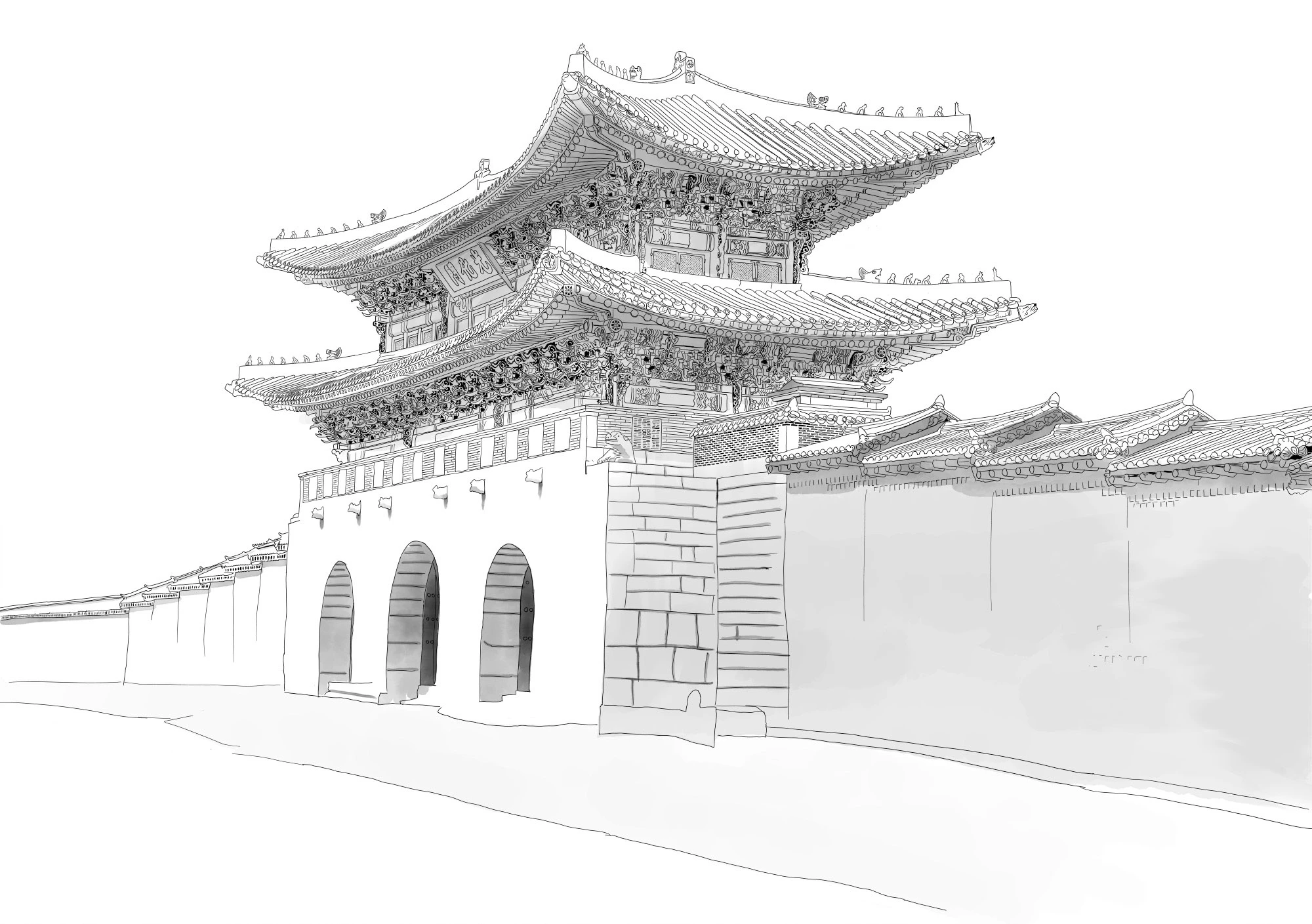
Drawn with liner pens and digital watercolor wash in Adobe Fresco. I really fell in love with the intricate details of the palace structures in Seoul. This one is probably the first that people see on their arrival in Seoul. Gwanghwamun Gate was built in 1392 as the southern gate to Gyeongbokgung Palace. Gyeongbokgung was the main royal palace of the Joseon Kingdom, which lasted from 1392 to 1910, and this gate is the most visible element of the palace from nearby areas in the city.
The palace was burned to the ground during Japanese invasions in the 1500s, but rebuilt in the 1800s. During the Japanese Occupation in 1926, the Japanese demolished the gate. Later in the twentieth century, it was rebuilt, but with concrete and not in its exact historical location.
But in 2010, it was fully renovated at the exact original location with its original wood and granite material.
Like other Joseon palaces in Seoul, this gate is painted using techniques grouped together as a style called dancheong: intricate, intensely colored and with symbolic motifs.
The dancheong style wasn't invented during the Josean era, but actually goes much further back in Korean history. On Ganghwa Island, for example, I saw ancient Buddhist temples, pagodas, shrines and other traditional Korean wood buildings that dated over 2000 years old.
Muninseok Statues
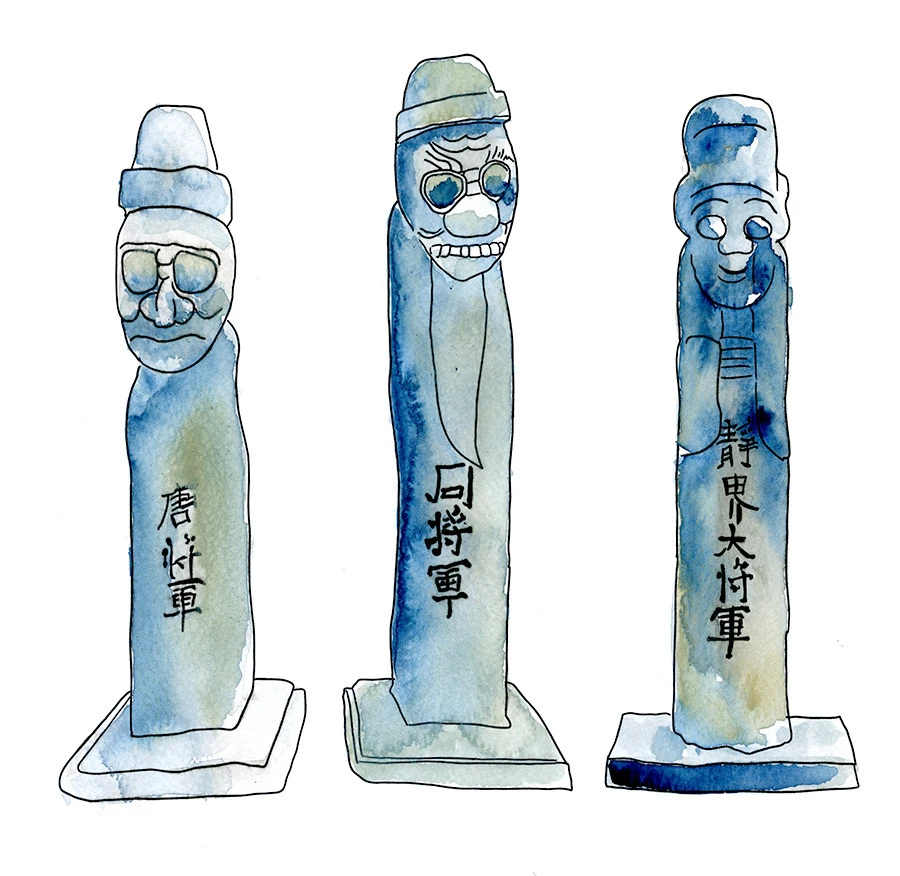
I sketched these Muninseok and Muinseok replica stone statues at the National Folk Museum inside the walls of the Gyeongbokgung Palace. Muninseok are like statue cartoons of politicians and other civic officials, and Muinseok figures are cartoon military figures. During the Joseon Dynasty, these statues would have been placed near tombs, to symbolically guard the dead.
Hanbok Boy
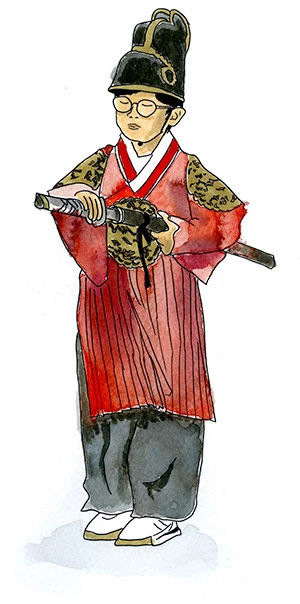
Hanbok is Korea's traditional clothing, known for its flowing lines and vivid colors. Whiile hanbok was the everyday wear of the Joseon era, hanbok today is reserved for special occasions — weddings, holidays, and as in this case, visits to historical sites like Seoul's palaces. At places like Gyeongbokgung, it's common to see people of all ages, from children to grandparents, dressed in hanbok as they explore the palace grounds.
Wearing hanbok at historic sites like Gyeongbokgung is a way to connect with the past, to walk — quite literally — in the footsteps of ancestors. It brings a living dimension to these stone courtyards and wooden halls. But also, visitors dressed in hanbok are granted free admission to these palaces: another way that Korea cleverly markets its culture. The strategy is brilliant in how it leans in on the eternal female desire to dress up, and boys eternal desire to carry around samuraii swords.
Munjeongjeon Council Hall at Changgyeonggung
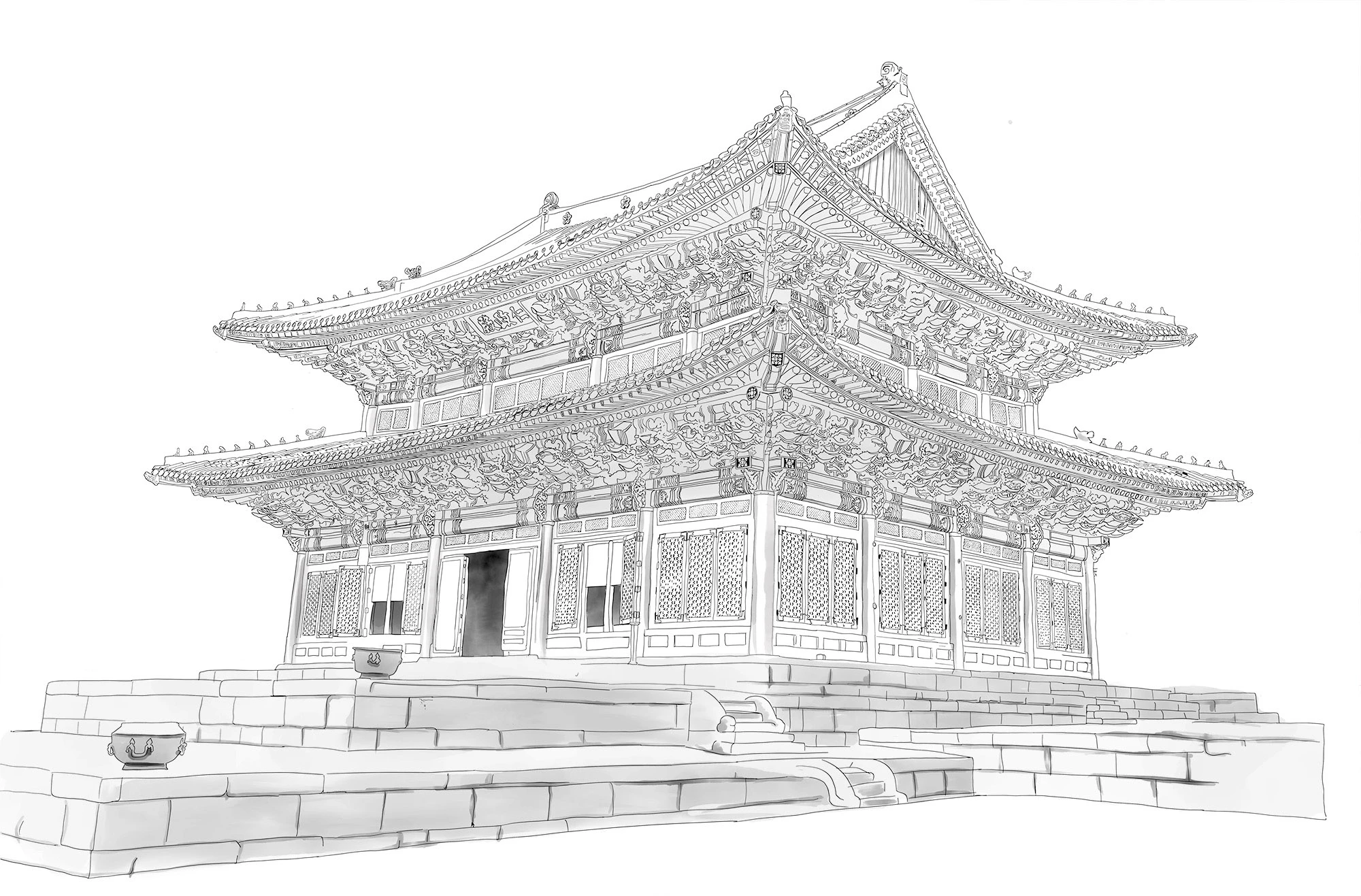
Munjeongjeon is the main council hall of Changgyeonggung Palace in Seoul, Korea. Changgyeonggung is a secondary palace to Gyeongbokgung; almost like a woodland retreat. So this council hall is almost like the conference room at Camp David.
The structure follows traditional Joseon-era palace architecture: a raised stone platform, wooden columns supporting an elegant hipped roof, and a throne positioned against a backdrop of the Irworobongdo — the iconic painted folding screen of the sun, moon, and five mountain peaks.
Munjeongjeon Council Hall has been destroyed and rebuilt several times due to invasions, fires, and Japanese colonial interventions, but its current form preserves the 17th-century atmosphere and proportions.
I knew that I wanted to draw Munjeongjeon Council Hall before I visited Korea, so I studied angles of the building before arriving. I used a tilt-shift lens to get an image that corrected the architectural lines of the building. I then took two shots. One at normal exposure and the other overexposed by 6x, to make the dark details under the roof clearly visible. I then used that as a reference photo to draw the detailed building. I added a digital ink wash in Adobe Fresco.
Heart of Hipjiro
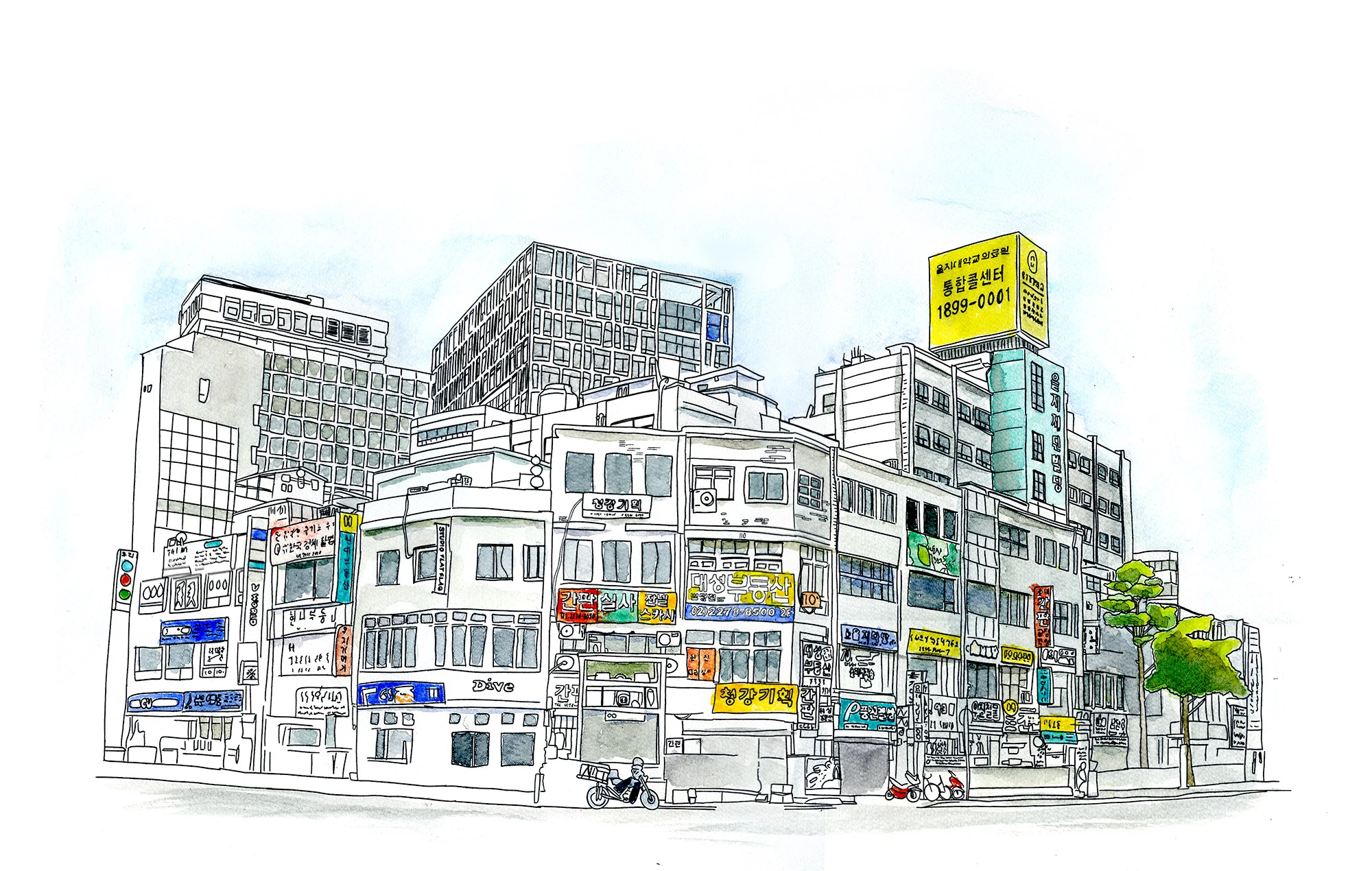
I sketched this scene between Euljiro 3-ga and Euljiro 4-ga; the exterior of a dense set of narrow alleys that have become the center of Seoul's underground. While much of Seoul is transforming into a modern, international global city, Euljiro, nicknamed, "Hipjiro" by locals, is defiantly dated, and looks like old Seoul. Its filled with minimalist cafes, vinyl shops and rows of specialized printers. I wrote about my explorations of these Euljiro alleys.
